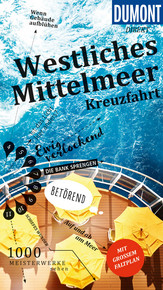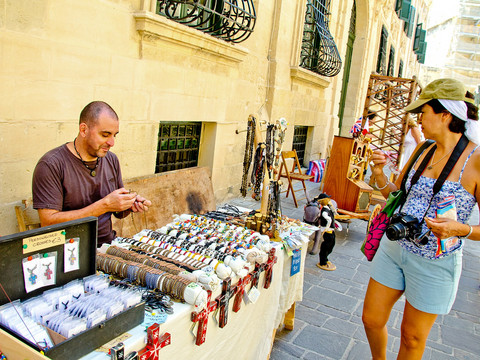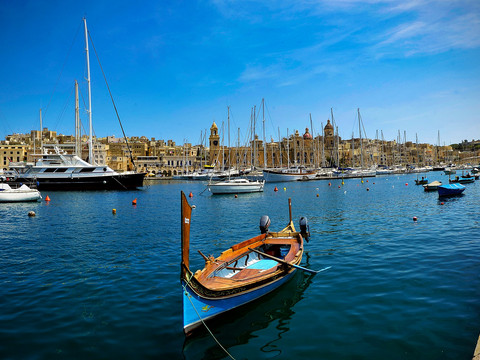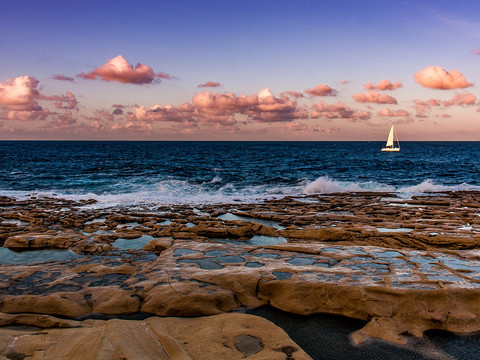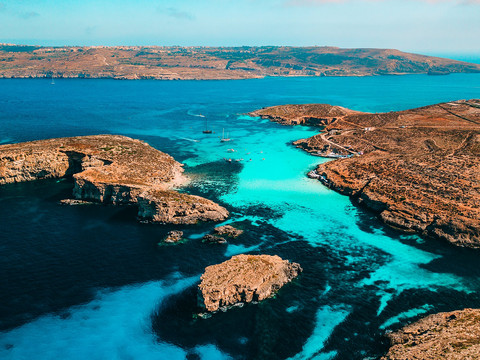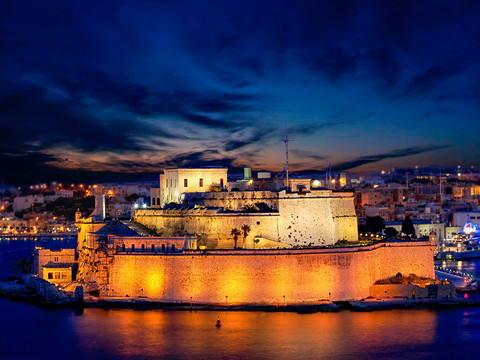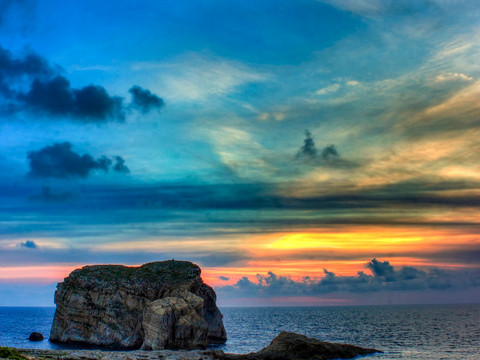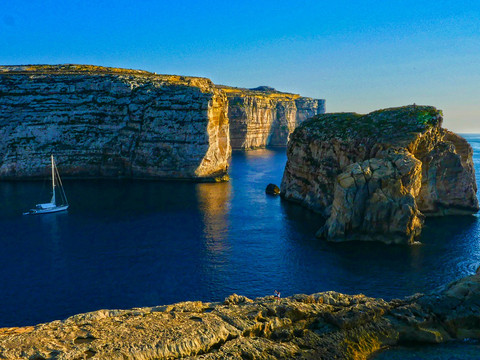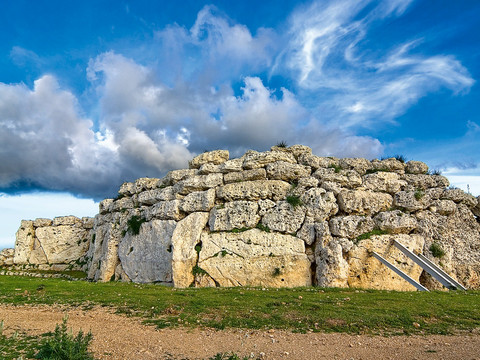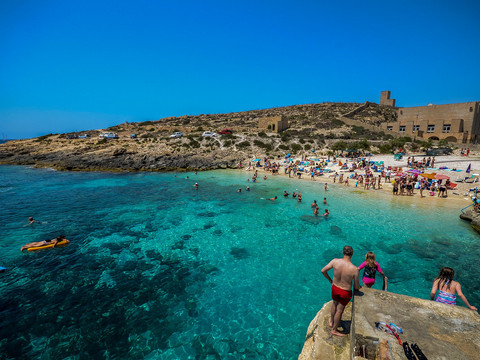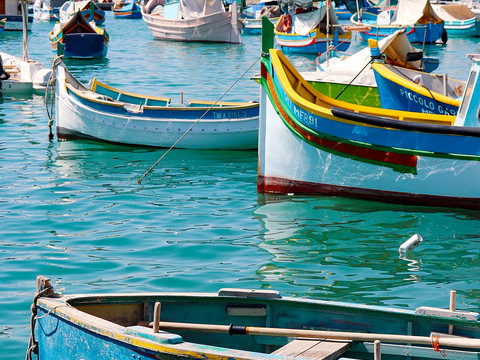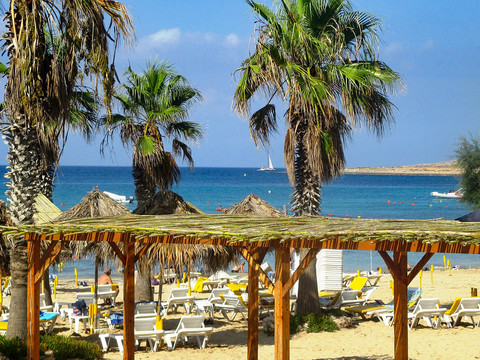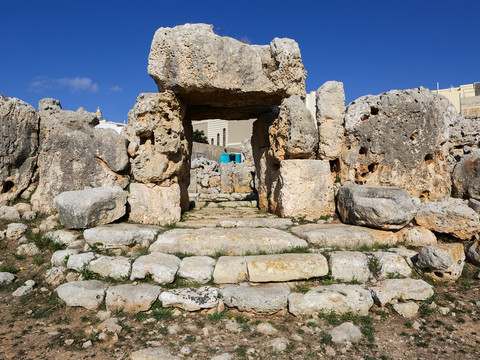The small archipelago in the southern Mediterranean, which includes the islands of Malta, Gozo and Comino, surprises and delights far beyond the well-known sights. Besides the rich cultural heritage, rugged cliffs, picturesque fishing villages with colourful boats and beautiful beaches provide variety. Malta also has a lot to offer in terms of cuisine: Whether crispy pastizzi, sweet cannoli or Maltese ravioli - there is something for every taste. And what other island can boast 300 days of sunshine a year!
Malta is very easy to travel to for visitors from Switzerland. Air Malta takes you from Zurich to one of the ten smallest sovereign states in the world in just over two hours. As English is the main language alongside Maltese, you should have no communication difficulties in Malta. The Maltese are also very open and helpful. Driving a car in Malta is a bit more of a challenge. Not only because of the left-hand traffic and the associated shifting of gears on the left-hand side, there are no real traffic rules in Malta. But as soon as you get used to it and avoid the densely populated surroundings of the capital of La Valletta, the initial stress is quickly forgotten. People from Sicily first settled in the small republic, which today has around 400,000 inhabitants. Later, the Phoenicians, Carthaginians, Romans, Arabs and knights of the Order of Malta ruled. And as if that were not enough foreign domination, Malta also became a British colony from 1814 to 1964. Today, however, only the numerous cultural treasures remain as reminders of those stormy times. Speaking of stormy. If there is a storm, it is only in winter, otherwise the small Mediterranean island enjoys almost 300 days of sunshine. And there are even more - 365! There are 365 churches on the island, so you could visit a different place of worship every day of the year. At least one should be on your bucket list: St. John's Co-Cathedral in the capital La Valletta. As simple as the baroque exterior façade is, the nave inside is impressively magnificent, with elaborate paintings and lavish decorations of gold. The ceiling of this church, dedicated to John the Baptist, is painted in rich detail.
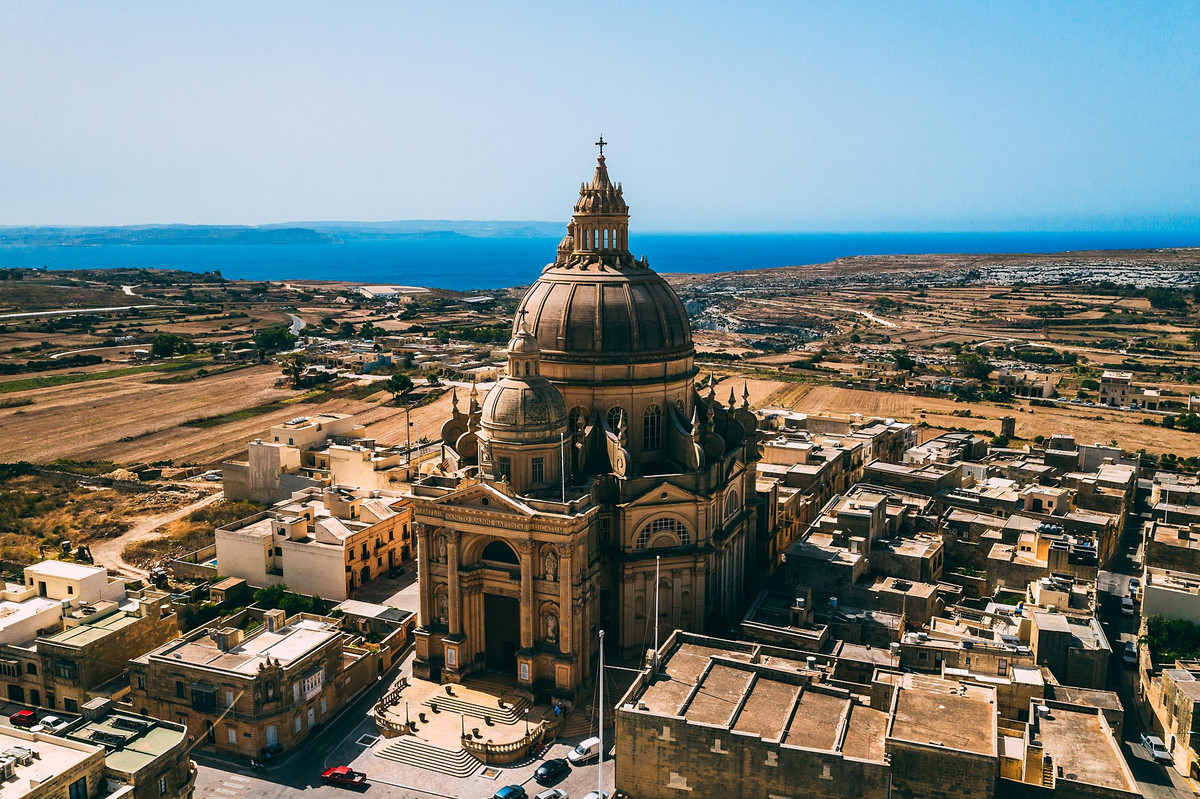
In 2018, the island capital Valletta was named European Capital of Culture. And rightly so, because its many historic buildings exude a charm that not only makes culture lovers go into raptures. The entire city of Valletta has been a UNESCO World Heritage Site since 1980. The smallest capital of the EU is situated on a headland with "three cities" on the right and Sliema on the left. Valletta's imposing fortress walls and bastions as well as its enchanting little streets have already been the backdrop for several film productions. For example, Steven Spielberg's "Munich". Probably the most beautiful view of Valletta is from the Upper Barrakka Gardens. The complex extends in the southern bastion, right next to Castille Square. A lift takes you comfortably from the harbour to the viewing platform.
Bright colours put you in a good mood. This is also the case in the fishing village of Marsaxlokk, which is hidden in a bay in the south-east of Malta. Brightly painted, the traditional luzzu fishing boats rock to the rhythm of the waves. The whole bay is full of these bright splashes of colour. Marsaxlokk has retained its original charm despite the many visitors.
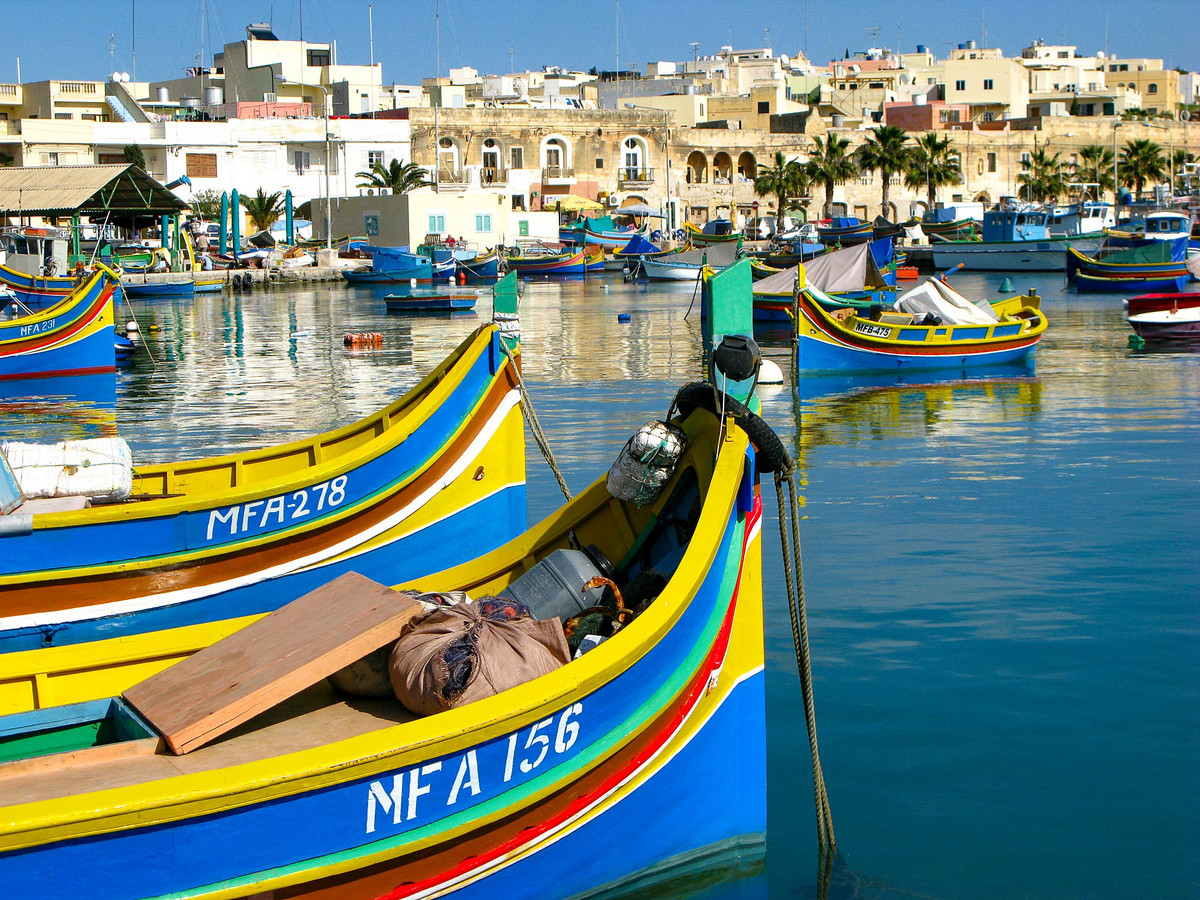
When you travel to Malta, you naturally want to enjoy the sea. This can be done in St. Peter's Pool, a natural pool that is continuously flushed with fresh sea water. Or with a boat trip to the Blue Lagoon. The typical Maltese Luzzu boats depart from Wied iz-Zurrieq and Bugibba to the grotto. A visit to the Blue Grotto can be combined with a visit to the 5000-year-old sites of Hagar Qim and Mnajdra Temple. Hagar Qim means "standing stones", which can be traced back to the gigantic megaliths from which it was built. The largest of them weighs a whopping 20 tonnes! A flagstone path leads to the second temple, Mnajdra, which, in contrast to Hagar Qim, can not only be walked around but also visited inside. Both buildings are UNESCO World Heritage Sites and are estimated to have been built between 3600 and 2500 BC. If you are interested in even more ancient buildings, be sure to visit Mdina, the ancient capital. Even from a distance, the massive fortress walls of Mdina inevitably attract attention. The former ancient capital of Malta has only about 400 inhabitants and is enthroned on a rocky plateau in the western interior. Inside the fortress there is an enchanting medieval flair. Cars are not allowed here. The gigantic walls were built by the Romans and later inspired the Arabs to give it the name Mdina, which means "walled city". Declared the capital by the Knights of St John around 1530, Baroque architecture meets medieval buildings - a unique atmosphere! Just six kilometres south of Mdina, the Dingli Cliffs, some of which are over 250 metres high, rise out of the deep blue sea. If you drive from Mdina towards the sea, you will pass the highest place in Malta - Dingli - and a little later reach a plateau where a few benches invite you to linger and enjoy the magnificent view.
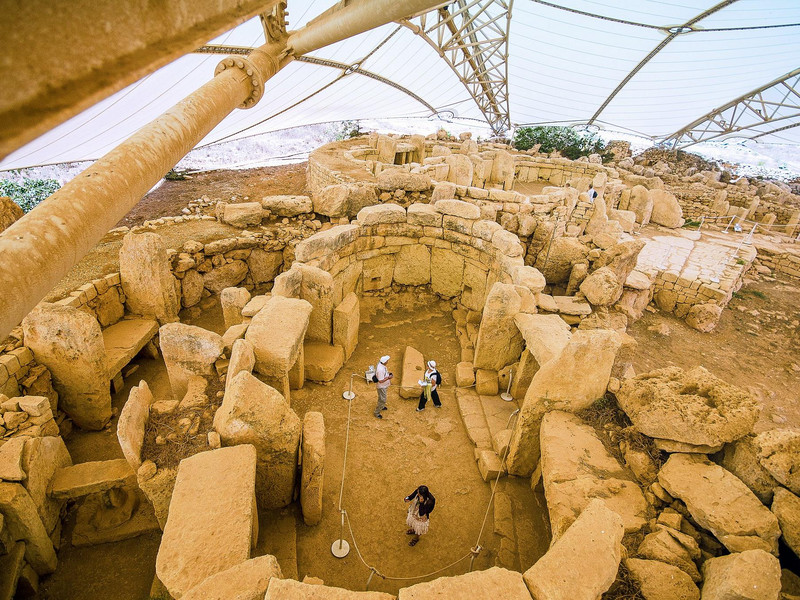
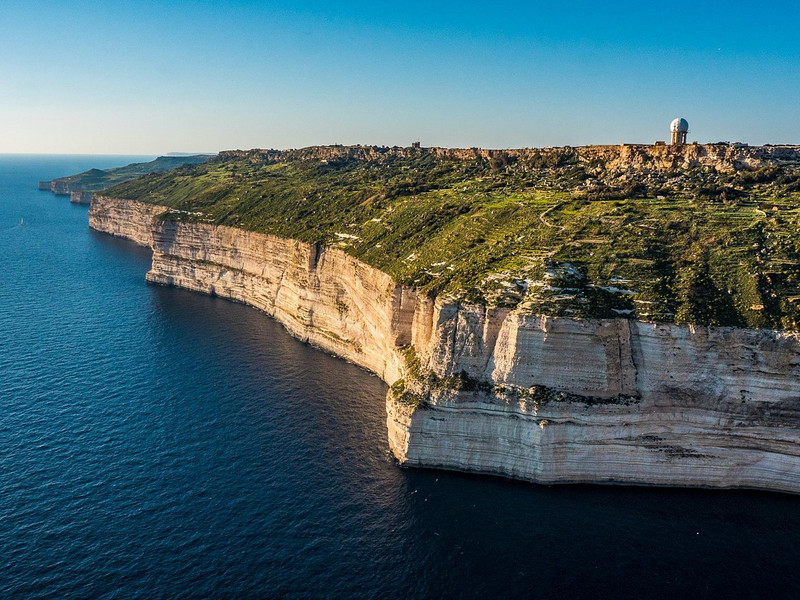
Popeye Village is totally out of the ordinary, but well worth a visit. The set town was built in 1980 and used as a film set for the movie "Popeye" with Robin Williams. It took only seven months to build the 19 real wooden houses, paths and the harbour two kilometres west of Mellieha. Today, the site is a theme park that revolves around the sailor who eats spinach with gusto.
Be sure to plan a side trip to the neighbouring island of Gozo as part of your day visit. Just a short ferry ride from Malta's west coast, the neighbouring island of Gozo slumbers away. It is much quieter than Malta and very idyllic. The sister island is also a lot greener. The locals still live from fishing and agriculture. Ta' Dbiegi in the east of the island's capital Victoria is worth a visit. Crafts are presented in the Craftsvillage. You can watch glassblowers at work or look over the shoulder of a silversmith. Spectacular scenery awaits you on the north coast, where salt is still extracted according to ancient tradition. The salt pans were supposedly already built by the Romans, who carved them out of the huge rock plateaus. The seawater is washed into the basins, where it evaporates and the remaining salt layer is skimmed off. In picturesque Xwejni Bay, the surf has created bizarre formations from the light globigerine rocks. The blue salt pans, which look like swimming pools from above, form a great contrast. Even though the Maltese islands are not exactly blessed with sandy dream beaches, the beautiful red sandy Ramla Beach in the north-east of Gozo promises wonderful bathing pleasure. Cafés and restaurants quench hunger and thirst, sunbeds and parasols for rent make a day by the sea even more pleasant.
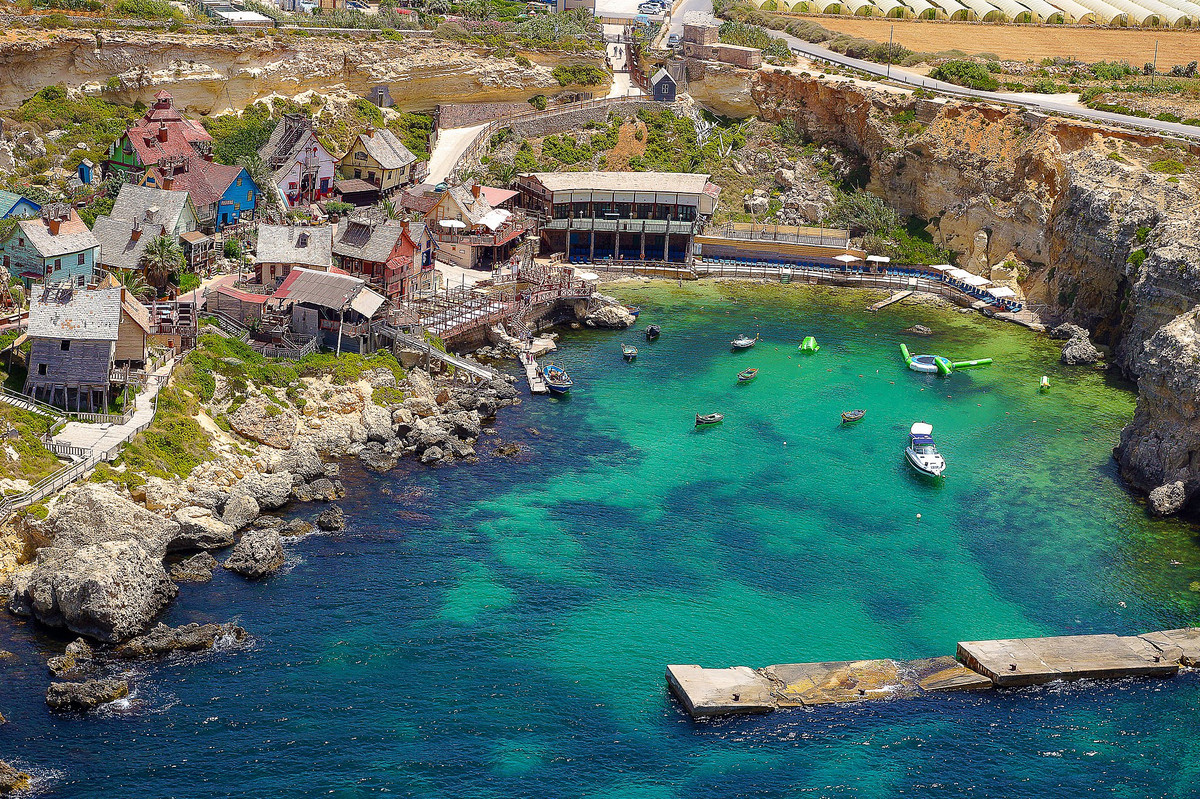
Back on the main island of Malta, a warm summer evening can end wonderfully at the Terrone restaurant in the capital Valletta. The restaurant scores with a cosy terrace and an interesting menu with Italian dishes and freshly caught fish.

To properly prepare for your trip
This is how you get there:
nonstop from Zurich with Air Malta.
How long am I supposed to go:
1 - 2 weeks
Best time to travel:
Spring to autumn
Accommodation tip:
www.chapter5malta.com
Highlights:
La Valletta, Temple Ħaġar Qim, Marsaxlokk fishing village, Gozo.
Excursion Tip:
Gozo, more activities at www.getyourguide.ch
Restaurant Tip:
www.terrone.com.mt
More info:
www.visitmalta.com
Realised by Michael Bachmann
Further travel pictures under www.kissed-by-nature.com
